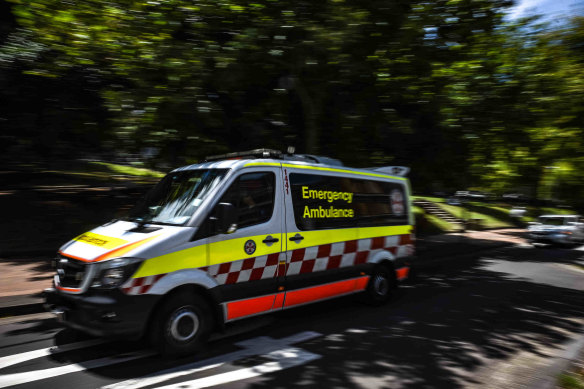Critically ill and injured patients in Sydney’s inner west, northern beaches and Hawkesbury regions are waiting longer for ambulances than this time last year as NSW emergency departments grapple with increasingly sick patients.
There were 385,345 ambulance responses in NSW between April and June, the most of any quarter since 2010, data released by the Bureau of Health Information (BHI) on Wednesday revealed. The 18,461 immediately life-threatening medical emergencies (P1A) was the highest recorded since 2010, and 36 per cent higher than the same quarter last year.

Ambulance demand has outpaced population growth in the past five years. Credit: Flavio Brancaleone
Health Minister Ryan Park said people who could not afford to visit their GP were ending up in emergency departments and ambulances, after quarterly hospital data revealed both were facing unprecedented demand that is rapidly outpacing population growth.
“I am particularly concerned the lack of access to primary care is driving people to put off care and management, particularly of chronic conditions,” Park said.
Emergency department visits were 3.3 per cent higher than in the same three months last year, with the number of seriously ill patients in the top three triage categories all hitting record highs. The number of semi-urgent and non-urgent patients remained relatively stable.
Dr Rhys Ross-Browne, a Sydney emergency doctor and the NSW chair for the Australasian College for Emergency Medicine, said the state government’s investment in programs to divert patients away from emergency departments was welcome, but “doesn’t really do much to help” those patients in the most serious triage categories.
“These are patients whose emergency care needs cannot be met in … urgent care centres or general practices,” he said.
Bureau of Health Information chief executive Dr Diane Watson said population growth alone could not explain record demand on the state’s ambulances and emergency departments.
Since 2017, emergency department attendances have grown 3.4 per cent faster than the population, Watson said, “even after accounting for the state’s increasing average age”.
Ambulance responses outpaced population growth by 4.5 per cent from mid-2021 to mid-2023. By comparison, hospital admissions and elective surgeries mainly grew at the same pace as the population – except for during the pandemic.
Despite growing pressure on the state’s paramedics, response times remained stable overall. Australian Paramedics Association NSW secretary Brendan McIlveen said this was due to paramedics going above and beyond to ensure patients were getting care in a timely manner.
“Paramedics these days don’t get to see a station, they don’t get a break, they don’t get to finish on time,” he said.
The biggest jump in demand was felt in Manly and Blacktown (north), where ambulance responses were 18 per cent higher than the same three months last year.
In Manly, the median response time for patients requiring an ambulance within 10 minutes (P1A highest priority) increased by 1 minute 42 seconds, and 1 minute 18 seconds for patients in the P1 “emergency” category with potentially life-threatening conditions. Ambulances responded 54 seconds faster on average to P2 “urgent” cases, which include serious conditions such as heart attacks, strokes and major burns.
Nearby, Pittwater and Warringah both saw response times increase across all priority categories, while emergency patients in Marrickville, Petersham and Sydenham waited 1 minute longer on average than April-June last year.
Health Services Union boss Gerard Hayes said the growth in ambulance call-outs reflected greater clinical demands on paramedics, who are increasingly expected to diagnose patients and administer medicines that prevent heart attack sufferers from deteriorating.
“It’s a profession that’s evolving and evolving quickly,” he said. “They [paramedics] are highly trained, and governments and the community are working [that] out.”
A spokesperson for NSW Ambulance said the longer response times were partly driven by the broadening of the category to include more clinical conditions, such as overdoses and breathing problems, since May 2022.
“Clinicians and control centre staff continued to provide outstanding care to the community, despite record demand for ambulance services for the seventh consecutive quarter,” they said.
The spokesperson said the median response time in the northern Sydney area was below the 10-minute benchmark.
Start the day with a summary of the day’s most important and interesting stories, analysis and insights. Sign up for our Morning Edition newsletter.